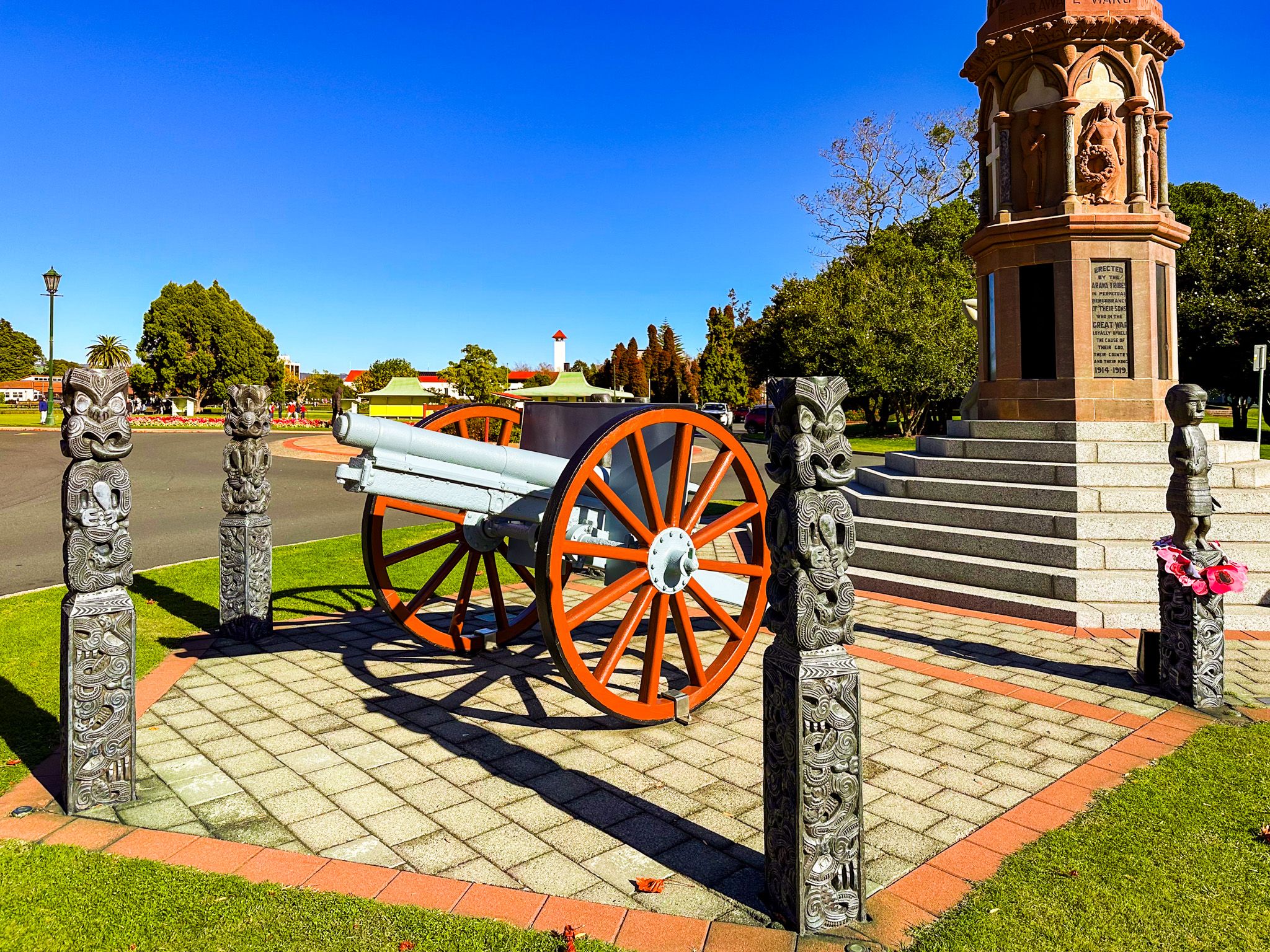Discover the Arawa War Memorial in Rotorua
Located at the eastern end of Government Gardens in Rotorua, on the corner of Queen Drive and Oruawhata Drive, the Arawa War Memorial stands as a tribute to the Te Arawa iwi men who served and died in World War I. This memorial is notable for its intricate design and historical significance, setting it apart from other war memorials across New Zealand.
Historical Significance and Unique Features
The Arawa War Memorial not only lists the names of the fallen but also features a statue of Rangitihi, a revered chief and descendant of Tamatekapua, the captain of the Arawa waka. This waka brought the Arawa people to the Bay of Plenty and Rotorua regions. The statue depicts Rangitihi with a taiaha, a traditional Māori weapon, poised behind his head. Surrounding the memorial are pou representing his children, known as Ngā Pūmanawa e Waru o Te Arawa, or the Eight Beating Hearts of Te Arawa, from whom all Arawa descendants trace their lineage.
Commemorative Panels and Historical Artifacts
The memorial includes several graphic panels that narrate significant events in Te Arawa history. These panels depict the story of Te Kuraimonoa and her celestial lover Pūhaorangi, the signing of the Treaty of Waitangi, the missionary work of Thomas Chapman, and traditional Māori weapons. A German gun captured by Te Arawa combatants during World War I is displayed on the west side, symbolising their bravery and dedication.
Architectural Design and Construction
Designed by William Feldon in a Gothic style, the memorial was constructed using Sydney sandstone and Belgian marble. Tai Mitchell and Gilbert Mair played crucial roles in its creation, motivating the iwi to fundraise and document their stories for future generations. The memorial was unveiled by the Duke of York, later King George VI, on 28 February 1927.
How to Get There
To visit the Arawa War Memorial, head to Government Gardens in Rotorua. The memorial is situated at the intersection of Queen Drive and Oruawhata Drive. Rotorua is well-connected by road, and the gardens are easily accessible from the city centre. While in the area, you can also explore other attractions within the gardens, such as the Rotorua Museum and the historic Bath House.









